Every little leprechaun needs a black pot! Try our St Patrick’s Day fizzing science activity with your little leprechauns this month. We love fizzing science experiments for any holiday, and this leprechaun rainbow activity is perfect for an easy to set up and inexpensive St Patrick’s Day science experiment.!
FIZZING POT OF GOLD FOR ST PATRICK’S DAY

BAKING SODA AND VINEGAR EXPERIMENTS
Get ready to add this simple baking soda and vinegar experiment to your St Patrick’s Day lesson plans this season. If you want to learn all about this fun fizzing chemical reaction, let’s dig in. While you’re at it, make sure to check out these other fun St. Patrick’s Day Activities.
Our science experiments and STEM activities are designed with you, the parent or teacher, in mind! Easy to set up, quick to do, most activities will take only 15 to 30 minutes to complete and are heaps of fun! Plus, our supplies lists usually contain only free or cheap materials you can source from home, grocery stores, or dollar stores!
We love to try out simple science for all the holidays and seasons. Plus, you don’t have to just use black pots. We also love to set out theme cookie cutters or fun theme containers! Learn how to set up a baking soda and vinegar science experiment at any time of the year..
Click below to get your free St Patrick’s Day STEM Challenges!
YOU WILL NEED:
- Baking Soda
- White Vinegar
- Food Coloring
- 6 Small Black Pots (or 1 pot is fine too!)
- Glitter and Fake Gold Coins (optional)
- Baster, squeeze bottle or ladle
- Tray

HOW TO SET UP ST PATRICK’S DAY EXPERIMENT
STEP 1: Start by setting out a tray with your six little black leprechaun pots! You can do a rainbow of colors or you can simply set up one pot for this fizzy experiment.
STEP 2: Next, you want to add food coloring to your pots! You can even throw in some coloring mixing skills here if you have the standard red, yellow, blue, and green liquid food coloring bottles. Alternatively, you can color 6 containers of vinegar that the kids can slowly pour into each pot of baking soda (after step 3 is complete).
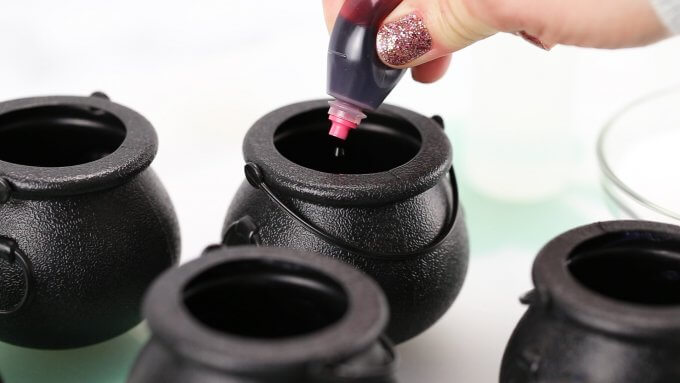
STEP 3: Once the food coloring is added or if you have decided to use separate containers for colored vinegar, go ahead and scoop in baking soda.
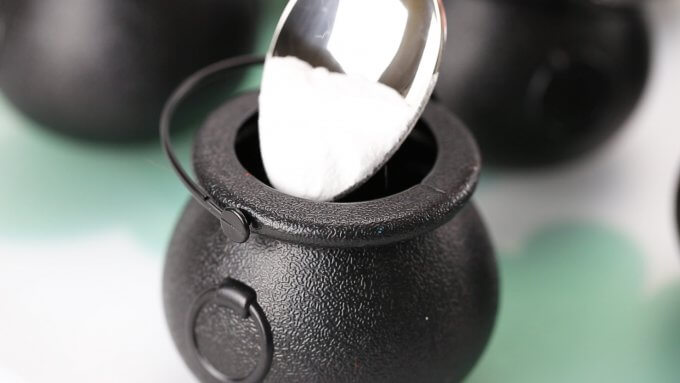
Step 4: Time to observe what happens when you add the vinegar to the pots. Mix up a rainbow of fizzy fun with a simple combination of baking soda and vinegar.
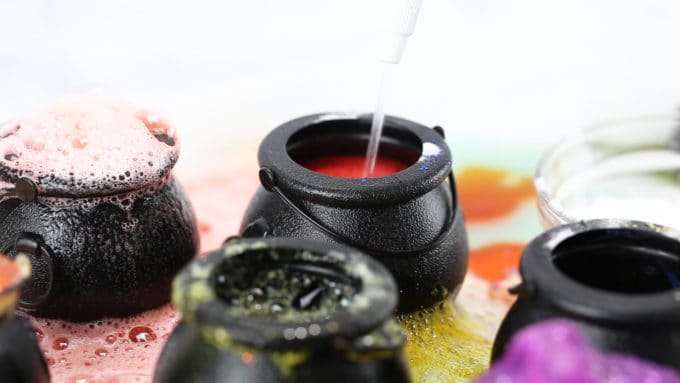
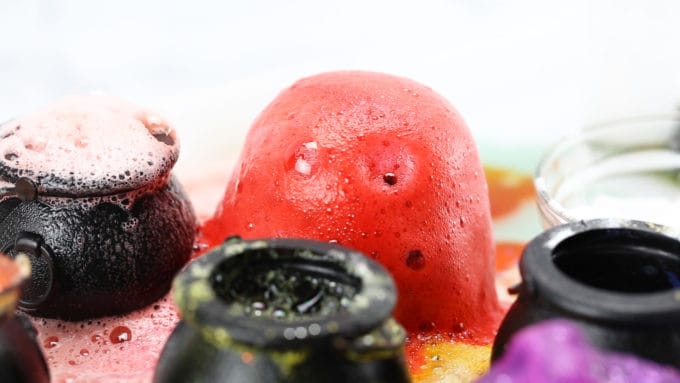
ST PATRICK’S DAY RAINBOW POTS IN THE CLASSROOM
For the best eruptions, the ones that make the kids squeal, you want to add a good amount of vinegar at one time. Pouring from a small cup or a full meat baster works best! A small eye dropper will not be as dramatic.
Additionally, you will want to make sure to have extra baking soda and vinegar on hand if you have the time. From my experiences, this baking soda vinegar activity is a real hit, and kids will want to repeat it over and over again.
If you don’t have vinegar, try lemon juice! It’s all about mixing an acid and a base so lemon or lime juice works too for the acid! However, vinegar is more cost-effective.
Another variation to try is baking powder and water as this also produces a bubbling reaction but not as awe-striking! Though, it would be fun to compare and contrast with older kids.
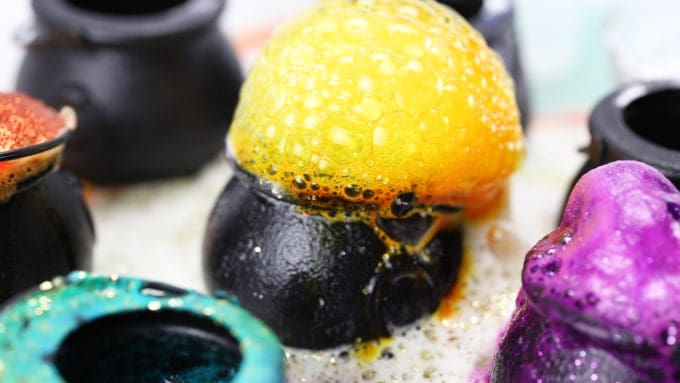
INTRODUCING THE SCIENTIFIC METHOD
Here are some easy questions to ask your kids before, during, and after this fun St Patrick’s Day experiment to get them thinking.
ALSO CHECK OUT: Scientific Method For Kids
BEFORE:
- What do you think WILL happen to the baking SODA when you add the vinegar?
- What do you think you will see? (PREDICTION)
DURING:
- What can you smell, see, hear, feel or see happening to the baking soda and vinegar in the pots?
- What does the combination of baking soda and vinegar look like now? (OBSERVATION)
AFTER:
- What are the bubbles (solid, liquid or gas)?
- Where do you think the bubbles came from? (EXPLANATION)
THE SIMPLE SCIENCE OF FIZZING RAINBOW POTS
The science behind this fun fizzing experiment is all about a chemical reaction! A chemical reaction occurs when two or more things combine together to form a completely new substance.
When the liquid acid (vinegar) and the solid base (baking soda) are added together, they form a gas called carbon dioxide. The fizzing bubbling action you see is evidence of the gas which you can even feel if you put your hand close enough!
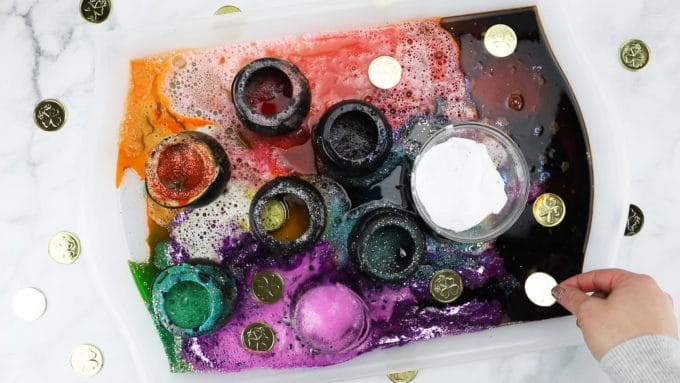
MORE FUN ST PATRICK’S DAY IDEAS
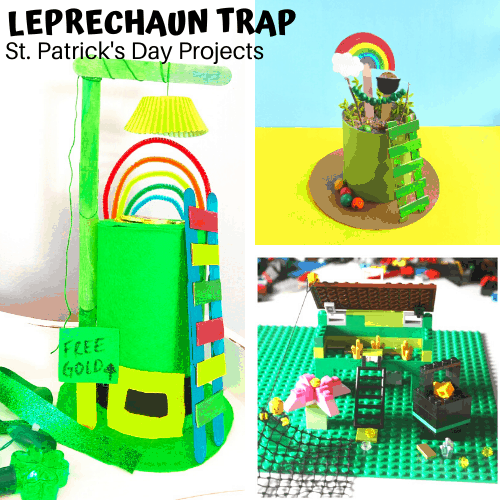




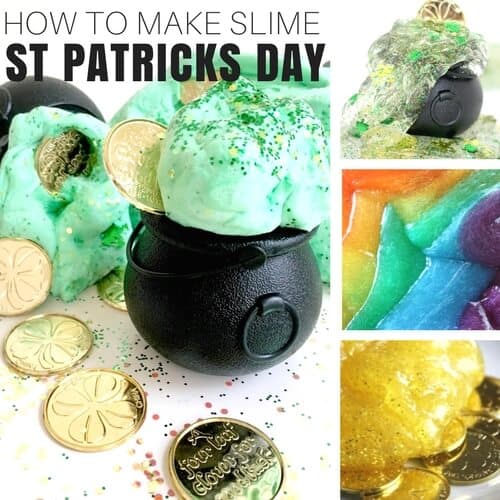
Printable St Patrick’s Day STEM Pack
Get ready to catch a Leprechaun, explore fizzy pots, and dig for gold coin oobleck all while exploring simple science and engineering design process with the St Patrick’s Day STEM Pack!
Over 100 pages of easy to use STEM activities that will make your prep and planning time a cinch! Cheap supplies, easy to set up and clean up, and full of hands-on fun!
- 25+ St. Patrick’s Day science activities and STEM projects kids that are easy to set up and fit into the time you have available even if it’s limited!
- Printable leprechaun theme STEM activities that are simple but engaging for home or classroom. Perfect for K-2 and beyond but easily adaptable to many skill levels.



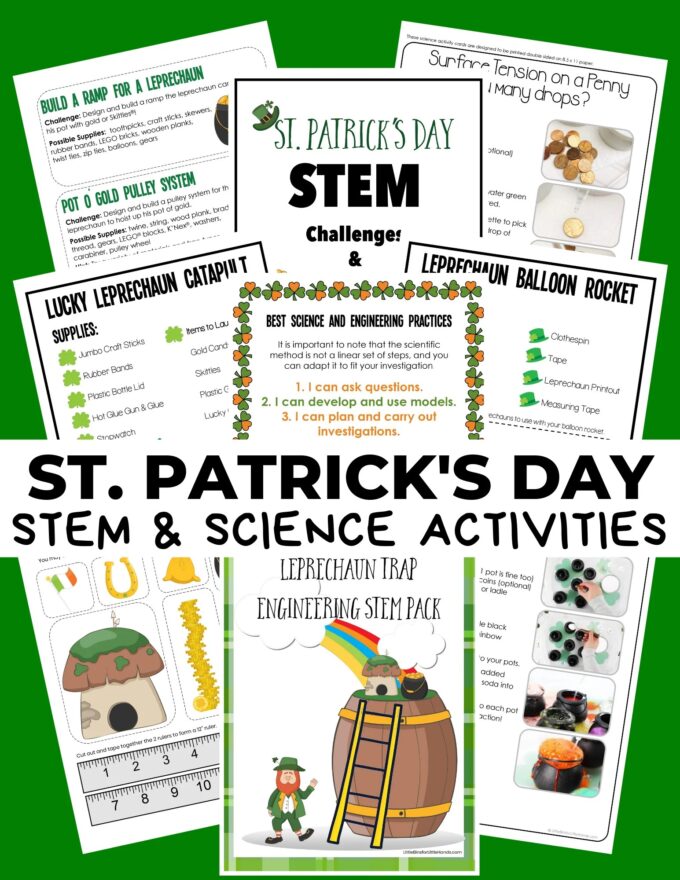






This is a great idea! I have some little cauldrons left from Halloween that would be perfect for this and my kids would love it! Pinning & sharing 🙂
I love how you set this up. The inclusion of the sequins and glitter are just perfect. Thank you for linking up to Discover & Explore. I’m featuring this post today.
I am glad you liked it. It was pretty popular around here too! Thank you for featuring it.
What could be more fun than mixing rainbow colors and fizzing eruptions? Thank you for sharing.
Thank you very much for taking the time to post this, it’s great and I know my grandson is going to love it. I just wanted to clarify something though. You started with this sentence and I’m not clear on what ingredient you’re talking about, I’m assuming it’s the baking soda that you’re referring to. Here it is: “I put about a tablespoon and a half (around there) into each pot and then sprinkled on green glitter (of course) and then color coded each pot with sequins. ” Will you please clarify. Thank you!
This looks like a project my son would love! Thanks for allowing me to share in my St. Patrick’s Day Roundup
Your welcome! Thank you!
This looks like so much fun! Thank you for sharing. I’m curious–how do you clean up after this activity? The baking soda and vinegar are fine to go down the sink, but probably not so much the glitter and sequins. Just wondering! Would love to hear what you did to clean up. tia!
Hi Shauna,
It depends on how much glitter and sequins I have used. I am sure a few have washed down the drain. I do use a strainer when I have those bigger items like sequins, and then I can scoop out the larger stuff and throw it away.